Will we shrivel up and lose all our gainz when we take a break from lifting?
I admit that I am very adamant about training consistently. At this point, I work in breaks from lifting and know how to improvise unplanned days off. All of the studies that we’ve discussed in journal club (such as this and this) have had training programs that demanded consistently attended training sessions.
Empirically, though, do we know this consistency to be required? Can we take a week or few off and still make the same gainz as someone who lifts consistently, especially if we’re newbies? What do the gainz look like under such training gaps if we take them?
In today’s journal club, researchers sought to answer this question. The 2012 study compared two training programs in newbies; one program involved consistent training sessions over 6 months and the other program involved multiple 3 week breaks from lifting. Did consistent hard work pay off in the end or did training breaks benefit the lifters? Let’s find out!
Methods
There were 7 participants in each group. Everyone was new to lifting. Strength as a 1RM bench press and isometric arm curl was tested before and throughout the 6 months of study. Biceps and triceps muscle activity during the curl was also measured. MRI scans were done of the chest and upper arms throughout the study to measure CSA and volume.
Both groups had to do the bench press 3 days/week, for 3 sets of 10 reps using 70% of their 1RM. They had a trainer that always pushed them to work as hard as possible. The “continuous” training group did this without stopping for the entire 6 months. The “periodic” training group did this for 6 weeks, then did nothing for 3 weeks, followed by another 6 weeks of lifting with a subsequent 3 week break, followed by a final 6 week stretch of training.
Below are the descriptive stats for the groups. As always, they’re group averages and rounded to the nearest whole number for the ease of viewing.
Results
What happened?! Over the 6 months study, both groups gained 3 lbs. In fact, both groups had the same results for their 1RM bench press gainz and muscle CSA/volume/activity. Over the 6 months, all of the participants had an average increase in their triceps muscles of 0.23% per day and 0.39% per day for their pecs. Below is a chart of the overall results for the entire study.
While everyone met at the same place in the end, what happened throughout the study?
For the first 6 weeks of training, both groups made the same progress. During each of the 3 weeks off, the “periodic” training group had losses. Those losses were followed by higher gainz over the following 6 weeks period, though. That resulted in gainz equal to the “continuous” lifting group. As the study went on, the “continuous” lifting group’s gainz slowed. That allowed the “periodic” lifting group to keep pace. The increase in CSA of the “continuous” lifting group was an average of 0.13% per day for their triceps and 0.22% per day for their pecs. The increase in CSA of the “periodic” lifting group was an average of 0.11% per day for their triceps and 0.21% per day for their pecs.
Below are graphs taken from the paper showing the progress of the groups across the 6 months study.
Strength Gainz
Pecs Muscles CSA:
Triceps Muscles CSA:
Below are graphs taken from the paper showing the changes in the daily % of the groups across the 6 months study.
Thoughts & Implications
This doesn’t speak to how breaks affect our blood work, glucose metabolism, fitness, etc., but it does say that we will have our gaiz as long as we get back at it. On that note, the plasticity of the CSA in the “periodic” group was very interesting. I wonder if these increases and decreases are present in veteran lifters. Is trained muscle CSA as tied to immediate lifting or is it more resilient and longer lasting in the face of time off?
The “periodic” lifting group went to 25% less sessions than the “continuous” lifting group. The “periodic” group had 33.5% less training volume than the “continuous” lifting group. Yet, they still had as many gainz. This study provides evidence that such diligence in newbies is not necessary to make gainz over time. The reality of training for most people is that consistent lifting can only happen for a few weeks at a time and then life gets in the way. During the first 6 months of lifting, at least, this study shows that we can still make great progress even when we have temporary layoffs.
This study also showed how progress slows over time. This information cannot tell us if taking breaks after 6 months will allow progress to stay high or if it will follow the same trend and decrease over time. Veteran lifters will say, though, that progress slows over time no matter what. Also, by choice or by force, we all eventually incorporate periodic time off in our lifting schedules. These breaks allow needed rest and recovery. How we take our breaks, completely or partially, varies. But, we take them.
Plain & Simply
While veterans undoubtedly have periodic breaks in training, New Year’s Resolutioners and transformationers usually try to plow all the way through months of lifting. They should try to not be so hard on themselves when they have to miss some sessions, as this study suggests that they will still get to the same place in the end, as long as they keep at it over time.
If you have any questions about this study or anything I said, please feel free to leave a comment. I will get back to you and others may have insight to offer, too. If you have any questions or topic suggestions that you would like answered as a post, then please email me at robert@analyticfitness.com.
Don’t forget to like Analytic Fitness on Facebook, or follow me on Twitter or the other social medias!

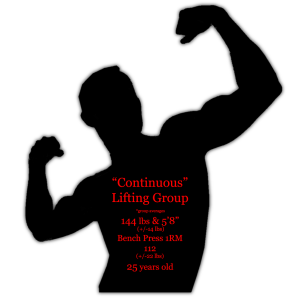
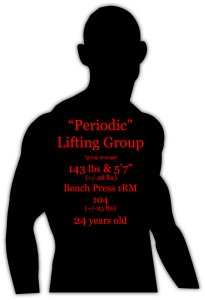

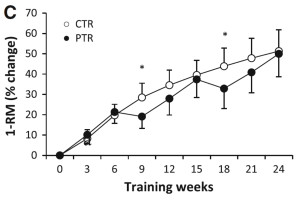
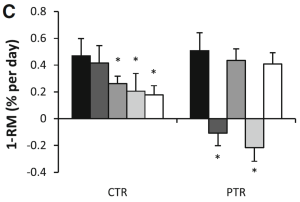
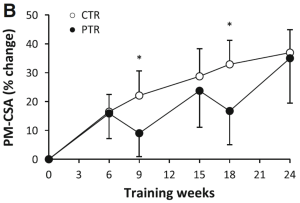
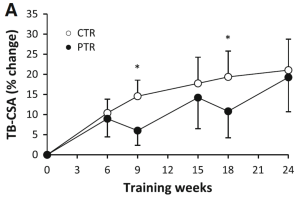
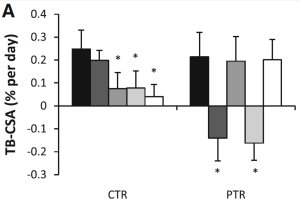
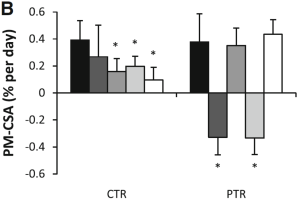




No Responses